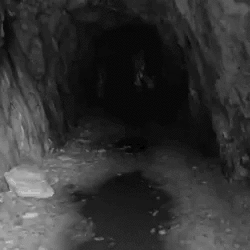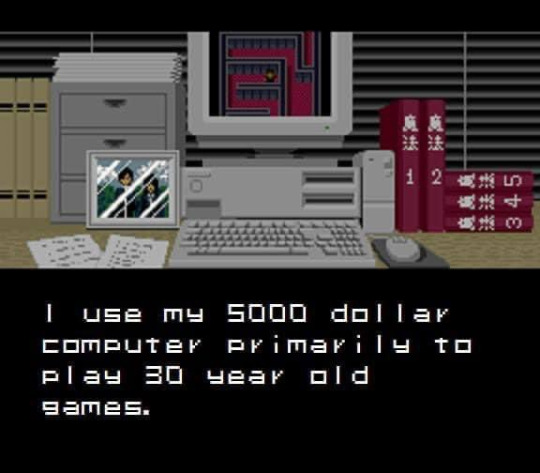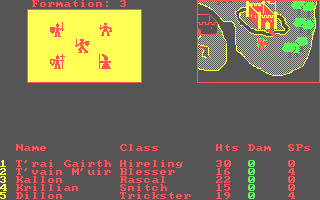#computer rpg
Explore tagged Tumblr posts
Text
You're telling me that if I really wanted to, I could use Neverwinter Nights Enhanced Edition as a virtual table top specifically for D&D 3rd edition?

#d&d#neverwinter nights#neverwinter nights enjaced edition#crpg#dnd#gaming#video games#vtt#rpg#ttrpg#computer rpg#dungeons and dragons#neverwinter#video game
4 notes
·
View notes
Text
Quick tour of the Gold Box games (Part 1)
So, given how much time I spent on the Gold Box games lately, I wanted to share some notes on the games, maybe also some relevant bits.
Pool of Radiance
Overall style: Mega Dungeon and Sandbox.
Overland Map: Traverse on grid, random and hidden locations
Quirk: Extensive level scaling which ups the challenge, especially in the beginning.
How does it fit in the line: This is probably the hardest title until the very end of the series. You find your bearings with the engine, its quirks, how the spells work, you have to sort out effective combat tactics. And then you're set. It's a great intro to both the Gold Box line and AD&D, but it surely does not tutorialize you. At. All.
Variety: You get the feeling of visiting many varied locations, some quests/sites have a different feel, some missions bypass the focus on combat. They crammed a lot into this one. Due to the limitations of the early engine you still feel like you battled a lot of the same enemies, over and over, and in waves. Still, many challenging set piece encounters that break the mold.
Notable NPC: Cadorna the Traitor.
What I think: See this article.
What can we learn from it: Healthy mix of environments. All missions lead to the end goal, but not all derive from the same big bad. Good, explorable individual locations. How to vary the same enemies into evolving encounters that keep challenging you. And it really did a good one on backtracking - more of that would have done the series good.
What it could have done better: Give a tutorial or intro to the game, or guide you at the start. Maybe. Sometimes figuring stuff out the hard way is also very rewarding.

Curse of the Azure Bonds
Overall style: Separate locations, spanning multiple maps each (episodic).
Overland Map: Point crawl. Mid-game, additional optional locations become available to explore.
Quirk: Cameo by Elminster... if you happen to know him.
How does it fit in the line: Curse of the Azure Bonds feels like a sequel. It is not as tight as POR, nor as focused. It evolves the engine somewhat. You get a bit of a feel for the politics / conflicts south of the Moon Sea.
Variety: Yes, there are many varied locations, but to me most of them don't have much flair. Dracandros' tower and the thieves' guild / sewers at the beginning seem most memorable in terms of dungeon design. Definitely a lot more variety in enemies. It has a damn beholder - probably one of the most complex monsters in the whole line.
Notable NPC: Dragonbait, the saurial paladin whose emotions you can smell. (Nacacia, my ass!) He's on the cover, too.
What I think: COTAB feels a bit weak compared to POR. It starts a trend in Gold Box games' dungeon design - you can enter a lot of rooms in a non-linear way, but most of them feature just unrewarding combat you may skip. And you want to skip lots of it, really. Most of the game I don't remember, having played it one week ago. In POR, set piece encounter rooms often featured some reward - a clue, a story, a piece of gear, needed money and XP. You often had to do many of them, anyway, might as well tie them up in a good way. Not in COTAB - they just feel so skippable! And while you may spend your sweet time exploring optional stuff and could do the middle part in any order, the game rubs a recommended order in your face, so it narrowly escapes feeling linear after all. (The illusion wears thin but holds, I guess.)
What can we learn from it: COTAB tries its best to keep the point crawl lively by tying stories to each leg of the journey, and tries to avoid being too repetitive by making routes previously traversed safe.
What it could have done better: While it works for COTAB, the idea of "the GM can do things to me" bonds is... highly questionable. The party suffers "consequences" for things they never intended to do and had no chance to avoid - and for example gets banished from a whole country. In the context of a CRPG that's no big deal. But in your campaign, this could suck big time.

Gateway to the Savage Frontier
Overall style: Separate locations, spanning typically a single map each (episodic).
Overland Map: Huge map. And yet almost completely unused except for conveying amount of travel needed - there's only one location you visit which isn't a city and it is in the most obvious place imaginable.
Quirk: We're the heroes, and we're gonna walk into every house in town. Oh look! We surprised some spies!
How does it fit in the line: As a game Gateway seems considerably less complex, it feels almost like a tutorial to the other games. You spend considerably less time on each location, making each feel even less memorable than COTAB locations. Given the restrictions of character import/export you should play Gateway right after COTAB. Could of course be considered its own line.
Variety: Quite a bit, it reuses a lot of stuff all over. You don't spend enough time anywhere to let it bore you, anyway.
Notable NPC: Krevish, the harmless-looking fighter. He actually has quite some useful stuff to say over the course of the game.
What I think: This is the tutorial for gold box games you never got. The game is easier, features difficulty controls. It is actually fun in its own way but also rather simple - it's essentially a MacGuffin hunt with some clues, and if you fail to decipher the clues, you can traverse the map and ask a friend. A super quirky sage friend.
What can we learn from it: Gateway, by virtue of having a big map, helps us envision the sheer size of the frontier. Different regions of the map have matching encounter tables - something you quickly learn if you travel through the Troll Moors...
What it could have done better: Gateway should have utilized that map better, placing locations in the wilderness you need to look for. Instead it opted to place practically all its crawling in cities - and adding some "cities" / "dungeons" off the world map on islands. In comparison, POR's overland map was smaller and more condensed, and yet there was plenty of original content to discover, including randomly placed monster lairs. What seems bizarre are all these city maps that double as explorable dungeons, so you get attacked by barbarians or stirges on your way to the inn.

Secret of the Silver Blades
Overall style: Mega Dungeon all the way.
Overland Map: None. Instead you have a central teleport hub you can use to avoid traversing the huge ass dungeon over and over. Only Gold Box title without an overland map, and it shows.
Quirk: Enormous plot convenience with a wishing well oracle that can generate riddle answers for money and has teleporters wherever you need them to break the game into manageable chunks.
How does it fit in the line: Even at the time, I read a review of the game that was rather dismissive and biased me against it. It is, in a sense, the most linear of the games. On the other hand, it broke the mold in making all these maps that were not simple 16 x 16 grids but huge-ass sprawling and branching dungeons to explore and map out by hand.
Variety: The game sends you through a sequence of locations - ruins, mine, dungeon, glacier/frost giant village, boss castle. Each area is themed. It sticks to its themes well, and yet that makes it feel less varied, somehow.
Notable NPC: Vala, the original plate mail bikini girl. To complement her picture (eyes up here, buddy!) you get a combat icon that shows a lot of mid riff. No wonder she takes way more damage than my (overleveled) party!
What I think: This game shows the importance of imagination in early computer RPGs. It might have fared better and distracted better from its linearity if these locations featured in a modern remake in third person or 3D style. But by lacking any overland map and you returning to this village for resupplying the game feels smaller than it is. It actually took me the most time to beat due to its sheer size. And it still feels like you're nowhere, getting nowhere. They tried to break the mold on this one, but psychologically they failed. You need to manage your players' perceptions, too.
What can we learn from it: Most people probably would get bored of the same Mega Dungeon sooner or later, no matter how much variety you contrive for it. (Leaving "Diablo" aside, an entirely different gameplay experience.) It's not that they failed to try for variety, they really tried, it's just the psychology of the whole thing. Which tells us that in RPGs, the setting matters a lot. If you feel cramped into this tiny nowhere psychologically, the actual total size of the combat maps doesn't matter much. The story feels terribly local and limited through the way it is told. The game itself is massive.
What it could have done better: Lots, actually! - Combining size with lots of random encounters is rather tiresome! I kept lowering the difficulty to finish combats faster and since the manual said it lowered the likelihood of encounters. - The game treats giants as regular encounters, making you wade through hill, fire, frost, and cloud giants like they are a nuisance. By the end, even three Ancient Red Dragons at once become a mere blip on the difficulty curve. This shows us rather neatly why even AD&D 2e did a rebalancing there. If ancient dragons feel like somewhat challenging enemies, then it reduces the sense of adventure. - The game massively relies on a particular sort of enemies in mid- and end-game: Monsters with flesh-to-stone gazes. If you don't have mirrors, this is basically a save-or-die encounter and winning initiative is extremely important. If you have mirrors and equip them in time, it trivializes a lot of encounters instead. It's rather satisfying to turn a medusa to stone, though. (The Gold Box games do not consider the penalties, I think, for fighting while averting your gaze.) Most sought item in the game: Reflective magic silver shield - total: 1. Save-or-die needed to go away and won't be missed. 5e does this much better. - Iron golems suck big time.

#gold box games#gold box#AD&D#advanced dungeons & dragons#computer rpg#crpg#pool of radiance#curse of the azure bonds#gateway to the savage frontier#secret of the silver blades
0 notes
Text
I was listening to an interview that Alexander Siddig did with Trek Geeks and this man said that he stayed up so late playing video games in the 90’s, and was so tired all the time on set, that the producers staged an intervention and were like “We’re going to support you no matter what your answer is but: are you on drugs?”
#and it was mainly ELDER SCROLLS#he was getting $7000 an ep and I guess he bought an absolutely insane computer setup#king#he still plays RPG all the time#fucking nerd#alexander siddig#siddig el fadil#ds9#deep space nine#deep space 9#julian bashir
3K notes
·
View notes
Text

Blue Mary and King view Mature content
#king of fighters#kof memes#kofedit#the king of fighters#aofedit#fatalfuryedit#art of fighting#fatal fury#king#king kof#blue mary#vice and mature#mature and vice#vanessa#vanessa kof#our gifs#our edits#our stuff#kof kyo#king of fighters kyo#rpg#gaming#gamingedit#gamingladies#gay#queer#bi#lgbt#lgbtedit#computer
409 notes
·
View notes
Text

It seems that no matter how much I try, the book stays upside down...
#janimay art#off#off batter#off player#off zone 2#off (game)#off game#computer core#webcore#off mortis ghost#artwork#rpg maker#when I entered the library#I knew that I would spend the next few hours there#searching for answers and lore
264 notes
·
View notes
Text


oh my god a fucked up nonbinary lesbian. I adore her
#I've been wanting to draw tiara for a MONTH!!#witch's heart#witch's heart tiara#rpg maker#art closet#wilardo's conclusion spoilers#I'm gonna be honest. I'm kind of having an “I hate my art” phase#this month has been… moody at best for me#while I've had some of the best days mentally I've had in like a year I've also had some really horrendous ones#being at my computer too long messes my brain up bad and drawing requires me to. y'know. be at my computer#I'm just trying to pull through
152 notes
·
View notes
Text

#gaming#video games#shin megami tensei#pc gaming#computers#steam#retro#relatable#funny#lol#humor#meme#super famicom#smt#rpg#90s#nostalgia#nostalgic#tech#pc#mac#imac#90's#nineties#retrogaming
841 notes
·
View notes
Text
I decided I was going to get cute and add little "Fig. 1.1", "Fig. 1.2", etc. prefixes to the captioned illustrations in a game I'm working on, and promptly ended up spending two solid days trying to figure out why my figure numbers were properly incrementing in the game's HTML and EPUB versions, but not in the PDF. It turned out to be a fucking difference of opinion between popular browser vendors and the developer of the tool I'm using to generate the PDF regarding how to correctly interpret the CSS specification for counters.
984 notes
·
View notes
Text

USA 1993
116 notes
·
View notes
Text

Technology Skill from Eureka: Investigative Urban Fantasy. Every investigator has the same 21 Skills, which are set at a rating from +3 to -3 depending on how good or bad they are at those things. Before applying any Traits, an investigator's skill ratings have to add up to net 0.
#ttrpgs#ttrpg#artists on tumblr#rpg#ttrpg art#ttrpg tumblr#indie ttrpg#ttrpg community#john carmack#programming#tabletop#computer#technology#indie game#indie rpgs#indie rpg#programmer socks#programmer#computer science#codeblr#eureka#eureka: investigative urban fantasy
120 notes
·
View notes
Text

#baldur's gate 3#rpg#my computer almost crashes when downloading freaking monster prom#it ain’t running a game that has 122 gb if 2 gb ones kill her
1K notes
·
View notes
Text




Bloodborne
(May 3, 2022)
#2022#Action#Action RPG#Blood Moon#Bloodborne#Doll#FromSoftware#Game#Game Screenshots#Gamer#Gaming#Good Hunter#Hunter#Kos#May#May 2022#Moon#My Screenshots#Plain Doll#PlayStation 4#PS4#PS4 Screenshots#RPG#Screenshots#Sony Computer Entertainment#The Doll#The Hunter#The Moon#Video Game#Video Game Screenshots
44 notes
·
View notes
Text


#Might and Magic#Might and Magic VII#Might and Magic VII For Blood and Honor#New World Computing#RPG#RPG game#video games#gaming#retro gaming
23 notes
·
View notes
Text
youtube
'Keep Driving - "Launch Trailer"'
[PC] [WEB] [VIDEO, TRAILER] [2025]
"An atmospheric management RPG about life on the open road. Pick up hitchhikers, work odd jobs, customize and repair your car, and map your route across the country. Use upgrades, skills and items to overcome challenges. And remember to take it easy. You’re young. You have time." ~Steam Blurb
Source: YouTube; Y/CJ/Y Games
#gaming#advertising#keep driving#indie#rpgs#management#roguelite#pc#computer games#ycjy games#videos#trailers#2025#Youtube#kowloon nights#steam
29 notes
·
View notes
Text
Dungeons of Kairn (DOS, Michael W. Lawrence, 1989)
You can play it in your browser here.

#internet archive#in-browser#dos#dos games#game#games#video game#video games#videogame#videogames#computer game#computer games#obscure games#rpg#rpgs#crpg#crpgs#retro games#retro gaming#retro graphics#game history#gaming history#indie games#1989#1980s#80s
82 notes
·
View notes
Text

The Legend of Xanadu (Turbografx) (1994)
#turbografx#turbografx 16#xanadu#legend of xanadu#rpg#computer games#gaming#video games#retrogaming#pixel art#pixel aesthetic
34 notes
·
View notes